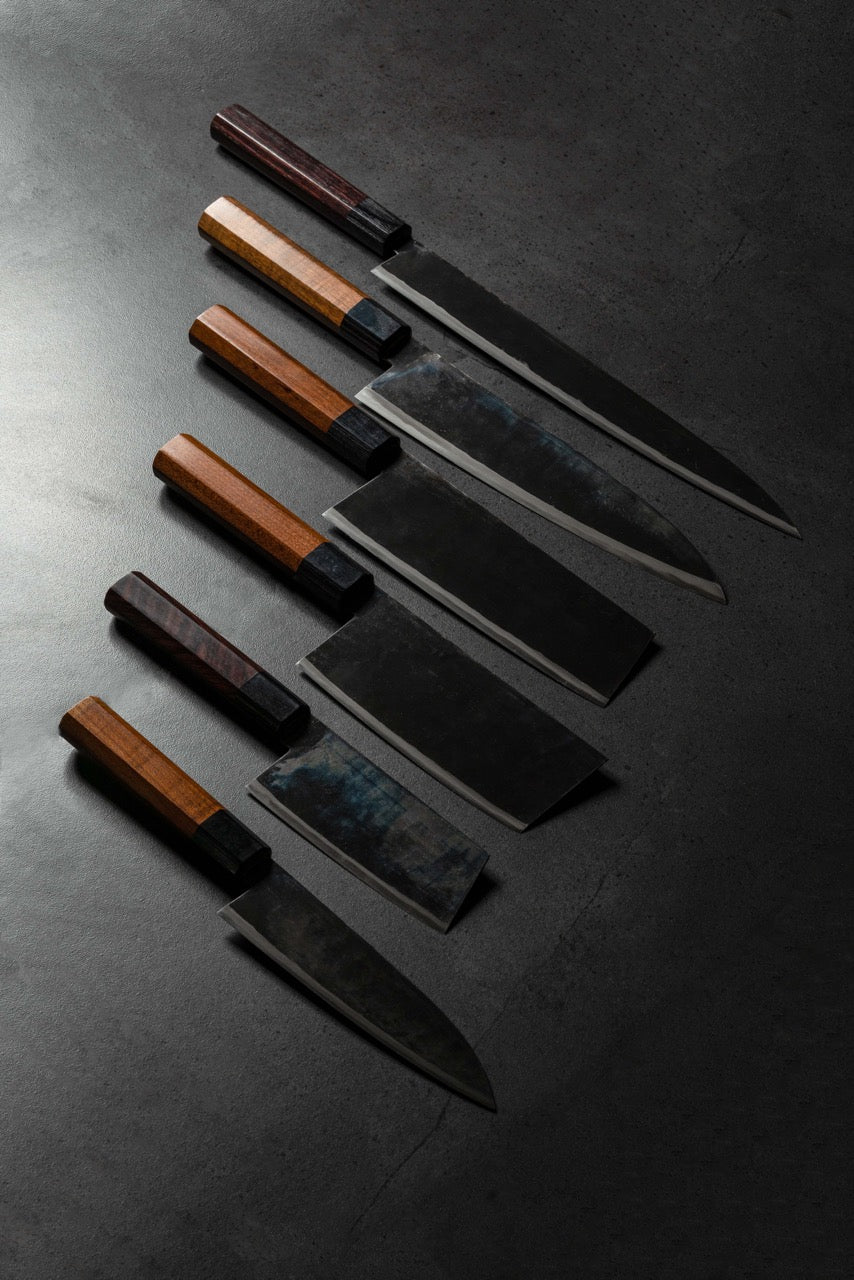
Hitohira Kikuchiyo Manzo Aogami #2 Takobiki 300mm Ho
Description
The Takobiki, a traditional Japanese slicing knife, is renowned for its unique design and specialized function in the culinary world. Characterized by its long, thin, and straight blade, the Takobiki is particularly favored for slicing sashimi, the delicate art of preparing raw fish in Japanese cuisine. Its length, which can range from 240mm to 330mm, allows for a single, swift, and precise cut without the need for a back-and-forth sawing motion, thereby preserving the texture and integrity of the fish. The Takobiki's blade is typically narrower compared to other sashimi knives like the Yanagiba, making it ideal for precise cuts and reducing the likelihood of the fish sticking to the blade. Historically rooted in the Kanto region of Japan, the Takobiki is not only a testament to the Japanese commitment to specialized culinary tools but also a reflection of the regional preferences in knife design, emphasizing finesse and precision in food preparation.
Kikuchiyo, the celebrated blacksmith from Sakai, Osaka, rose to prominence in the early 2000s when he was invited to join Sakai's master craftsmen. His early start in blacksmithing allowed him to amass extensive knowledge and skills before physical limitations set in. Notably, Kikuchiyo boldly experimented with unconventional steels like stainless, resulting in his Ginsan (Silver 3) knives becoming highly coveted among Japanese chefs. His expertise extended to Honyaki quenching, producing beautiful Hamon patterns and achieving the ideal hardness and consistance. Kikuchiyo's knives gained the respect of Sakai's sharpeners and finishers, and he remains dedicated to his dream of success, paying homage to his master's forge in every blade he forges.
Simply explained, Aogami #2 developed by Hitachi Metals is a steel made from Shirogami #2 in which some chromium and tungsten are added for better durability and corrosion resistance. In addition to that, the higher carbon content of the steel allows for better cutting retention. Objectively, the Aogami #2 is an improvement over the Shirogami #2. For patina lovers, however, Shirogami steel will be more reactive to oxidation and could be an advantage.
Tips for best results
Make sure your knife will deliver its absolute best by having it professionally sharpened at least once a year. Please note that our meticulously handcrafted Japanese knives are – unless otherwise noted – carbon steel and not stainless steel. To prevent rust, make sure the blades are patted dry – especially when cutting acidic items. Never cut frozen foods, hard products, bone, or twist the blade when using. Never soak in water after use or put in the dishwasher. After use, store in a cool, dry place and avoid high temperature fluctuations.
Our commitment to you – our customers
Warranty
Every knife we carry has a lifetime warranty from manufacturing defects and errors. For example, if the handle becomes detached or cracks appear after a few weeks of proper use. Or if there are any blade cracks from the edge to the spine. While such defects are indeed rare, they can occur. In such cases, we will exchange the knife in question or give you a refund. Each warranty case is different depending on the criteria, and we reserve the right in each and every case to evaluate the applicability of our lifetime warranty in the event of any manufacturing defects and errors.
After-Sales service
Do you get the feeling that your knife just can’t “cut it”?
Each knife we carry is supplied with a so-called “factory edge”. Our chef knife range comprises more than 200 different products. While all our handcrafted Japanese knives ship with a “factory edge”, ultimate blade sharpness can vary. If you feel that your knife’s blade edge is not performing to its full potential, feel free to contact us and we will provide you with professional sharpening for free!
Oops! What about the truly Unthinkable?
Was it just through a slight slip of the hand that your knife accidentally fell on the floor and damaged its tip and blade, or it was used to cut a hard, frozen product and chipped? Don’t despair, get in touch with us and we will solve the problem through our in-house, professional sharpening and repair service.
Simply contact us or visit our store to get a free estimate.











